Marine snails (sea snails) are a highly diverse group of gastropod mollusks found in oceans worldwide. From shallow tide pools to deep-sea habitats, these univalve creatures play vital ecological roles—grazing on algae, recycling nutrients, and serving as prey for fish and invertebrates. Many species also hold economic importance as seafood delicacies or ornamental shells. In this guide, we’ll introduce eight iconic marine snail species, covering their scientific names, shell characteristics, distribution, feeding habits, and conservation status. Whether you’re a marine biologist, shell collector, or SEO-driven content creator, this article delivers the authoritative, keyword-rich information you need.

What Are Marine Snails?
Queen Conch (Lobatus gigas)
Geographic Cone Snail (Conus geographus)
European Abalone (Haliotis tuberculata)
Checkered Nerite (Nerita tessellata)
Chilean Abalone / “Loco” (Concholepas concholepas)
Striate Bubble Snail (Bulla striata)
Australian Trumpet (Syrinx aruanus)
Rosy Murex (Chicoreus palmarosae)
Marine snails belong to the class Gastropoda within the phylum Mollusca. Key features include:
Univalve Shells: Typically spiral or conical, composed of calcium carbonate for protection and structural support.
Muscular Foot: A broad, muscular organ used for crawling and burrowing.
Mantle & Operculum: The mantle secretes the shell, and many species have an operculum (a “trapdoor”) that seals the shell aperture when retracted.
Radula: A ribbon-like tongue with rows of tiny teeth used to graze algae or bore into prey.
Habitats: Found from intertidal zones and coral reefs to deep-sea vents, occupying rocky shores, sandy bottoms, seagrass beds, and beyond.
Marine snails contribute to ecosystem balance by controlling algal growth and serving as both predator and prey. Overharvesting for food or the shell trade has threatened some species, making sustainable practices and conservation awareness essential.
Shell Appearance: Large, flared lip; pink-orange interior; conical, spiral exterior up to 30 cm.
Distribution: Caribbean Sea, Gulf of Mexico, and West Indies shallow reefs.
Ecology & Use: Herbivorous, grazing on seagrass and algae. Valued as a seafood delicacy (conch fritters, salads), leading to overfishing. Listed as “Vulnerable” by IUCN; trade regulated under CITES Appendix II.
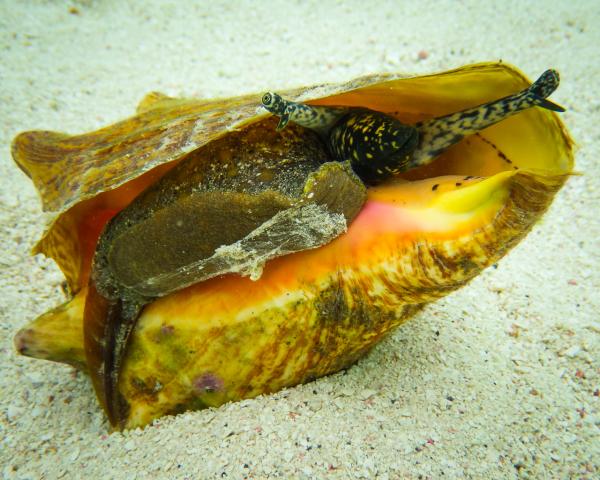
Shell Appearance: Cone-shaped with intricate, map-like brown markings; length up to 10 cm.
Distribution: Tropical Indo-Pacific reefs and lagoons.
Venom & Predation: One of the most venomous sea snails; uses a harpoon-like radular tooth to inject neurotoxins, immobilizing fish. Human stings can be fatal within minutes—hence the nickname “cigarette snail.”
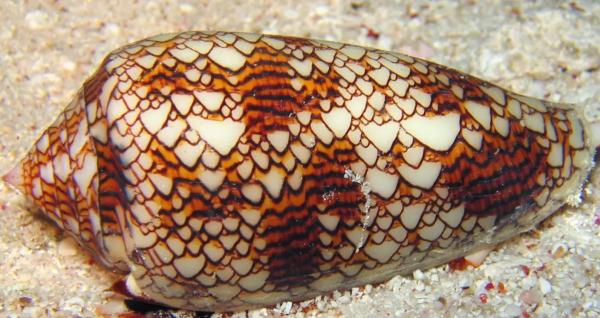
Shell Appearance: Ear-shaped, flattened; iridescent mother-of-pearl interior; series of respiratory holes along the shell edge.
Distribution: Northeast Atlantic coasts (English Channel to Morocco) and Mediterranean Sea.
Habitat & Fishery: Inhabits rocky subtidal zones; feeds on kelp and algae. Harvested for meat and mother-of-pearl. Populations decline due to overexploitation and habitat loss; managed under regional quotas.
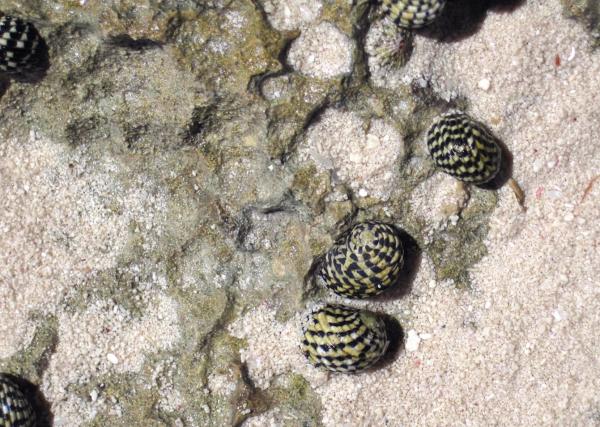
Shell Appearance: Globose, ~2 cm diameter; striking black-and-white tessellated pattern.
Distribution: Western Atlantic—from Florida and Caribbean to Brazil.
Ecology: Common on intertidal rocks; scrapes microalgae and biofilm. Its robust shell resists wave action and predation by crabs and fish.
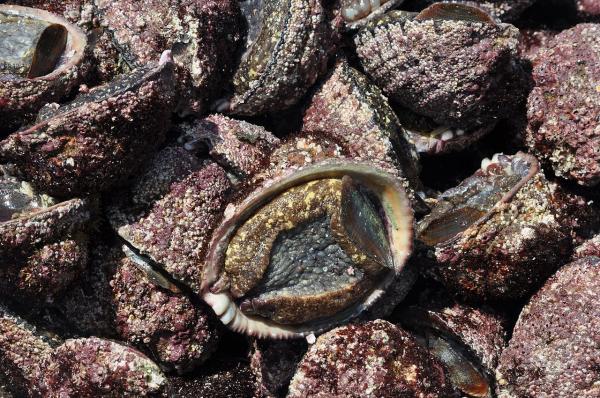
Shell Appearance: Thick, ovate, with pronounced ribs and a brownish exterior; up to 13 cm long.
Distribution: Coastal Chile and Peru, from intertidal to 100 m depth.
Economic & Biomedical: Prized in Chilean cuisine (“loco a la parmesana”). Overharvesting led to population declines; now managed by size limits and seasonal closures. Hemocyanin from its blue blood shows promise in cancer research.
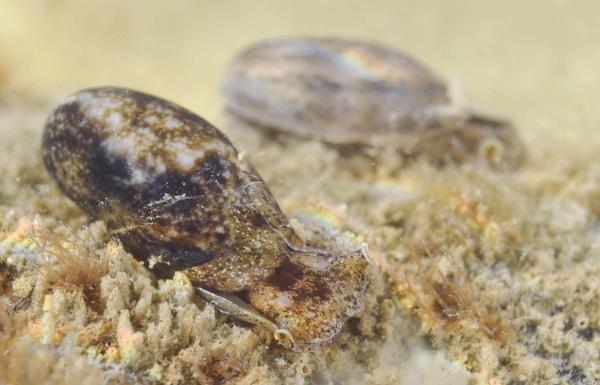
Shell Appearance: Smooth, bubble-shaped, up to 4 cm; light brown with darker longitudinal stripes.
Distribution: Shallow sandy bottoms and seagrass beds of the Atlantic.
Behavior: Nocturnal predator on small bivalves and worms. Empty shells often host hermit crabs, illustrating ecological shell recycling.

Shell Appearance: Largest gastropod shell—up to 90 cm long; thick, elongated trumpet shape.
Distribution: Northern Australia, Indonesia, and Papua New Guinea intertidal sand flats.
Feeding: Carnivorous, preying on echinoderms like sea stars. Its colossal size makes it a subject of marine biology and biomaterials studies.
Shell Appearance: Up to 10 cm; dark red-pink with elaborate branching spines.
Distribution: Coral reefs of the Indian and Western Pacific Oceans.
Ecology & Trade: Predatory on other mollusks; strong shell often encrusted by sponges and algae. Sought after by shell collectors—overcollection poses local risks.

Conclusion
These eight marine snail species showcase the remarkable diversity of sea snails, from tiny intertidal grazers to the world’s largest gastropod. Their varied shell forms, feeding strategies, and ecological roles underline the importance of sustainable harvesting and habitat protection. For more in-depth articles on marine life, explore our Marine Biology section—your go-to resource for ocean conservation and shell enthusiast insights.
animal tags:
We created this article in conjunction with AI technology, then made sure it was fact-checked and edited by a Animals Top editor.